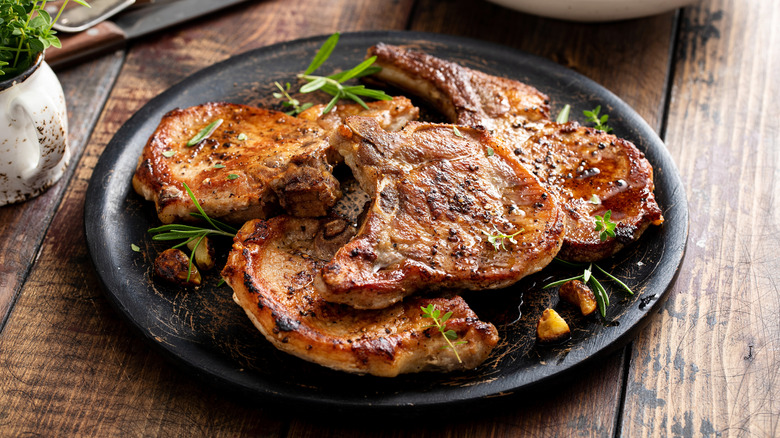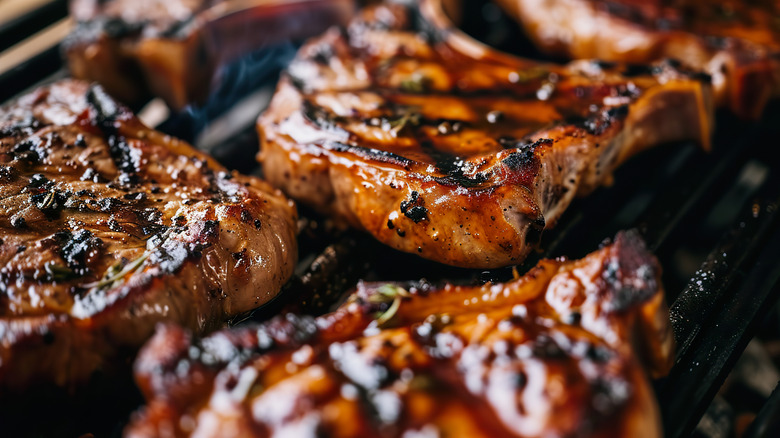Why It Always Pays To Buy Bone-In Pork Chops
Considering you can't eat a bone, buying bone-in pork chops can seem like a bad deal. After all, you're paying for something that will eventually find its way to your trash can. But according to chef Matthew Stowe, you're paying for more flavor, not more food. Stowe is the executive culinary director at Joey Restaurants, a high-end dining experience with locations all over the United States and Canada, including the Santa Clara, California location that opens in April 2025.
"Anytime you cook meat on a bone[,] you get more flavor," Stowe told Food Republic in an exclusive interview. "And that bone is going to insulate it as well and make it stay a little moister. You can still make great moist boneless pork chops, but by having a bone on there, it's going to have a little bit better flavor and just give you a little bit more room for error." Pork bones are between 20 and 30% collagen, a tissue that melts into pure flavor and moisture when exposed to heat. While it may take a little longer to cook bone-in pork chops vs. boneless, a bit of patience gets you a succulent cut that's easy to prepare.
The expert also pointed out that the intense taste and aroma of the bone itself is nothing to ignore either. Much like cooking steak in its own fat, every part of the cut contributes to its final flavor profile. Luckily, to cook a perfectly juicy pork chop on the stove and maximize that unique bite, all you need is a little prep time.
Brining bone-in pork chops
Even if you're short on time, a brief bath in brine brings out intense flavors in a pork chop that all but guarantees a juicy entree. "We have a great bone-in pork chop on our menu at Joey," Matthew Stowe shared with Food Republic. "We brine ours, so it seasons it kind of from the inside out. Just salt, sugar, and water[...]It helps keep it juicy and moist, especially with leaner white meats."
Most people think brines are an all-night affair, but there's nothing wrong with dropping a chop into a mixture when you get home from work. Stowe explained, "It just depends on what you're trying to do, [and] how quickly you need to season it as well." The ratio of salt, sugar, and water when crafting a brine is also an important factor to keep in mind. A higher concentration of seasonings in your mixture easily compensates for shortened soaking times, a great trick if you forget to season your meat the night before.
While the expert shared that a 10 percent solution is ideal for quick brining, a three percent solution is his go-to when brining meat over long periods of time. For bone-in pork chops specifically, Stowe confirmed that brining the cut in a 10 percent solution for two hours before cooking is perfect. It's a delicate balance, but tweaking your solution's salt percentage to accommodate brining times is a must when preparing pork chops.


